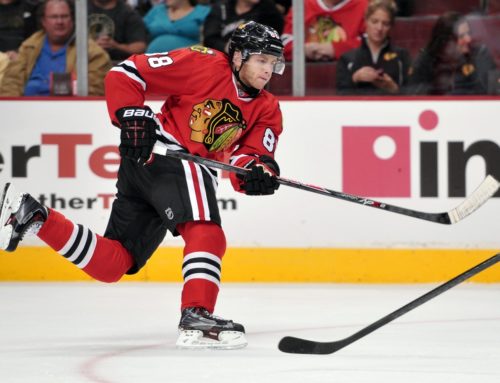
As the man with the most wins and the most shutouts in history, Martin Brodeur is often talked about as the best goaltender ever.
But Darcy Norman, author of Hockeynomics, emphatically disagrees.
Norman played at the junior level before heading to the University of Alberta to earn his degree in economics. A self-professed lover of the game, Norman believes numerical rigor can illuminate the many still-dim corners of the hockey world. In his book, Hockeynomics: What the Stats Really Reveal, he brings together the views of some of the most successful personalities in sports statistical analysis to answer questions like:
- Who's good at the draft? (and Hockeytown does not fare as well as you might think)
- Who will have the better career, Crosby or Ovechkin?
- Which teams spend wisely?
- Was Gretzky's 92 goals in 1981-82 the finest goal-scoring performance ever?
- Is Martin Brodeur overrated?
All of these questions Norman addresses with heavyweight mathematical theory, but his ease with the concepts and his casual writing style keeps the material accessible (and kept my eyes glued to the pages deep into the night).
It is the investigation of this last question concerning Brodeur that I want to share with you, because while many of the arguments in Hockeynomics have fantasy uses, the examination of Brodeur results in two new statistical measures that I think are relevant to goalies and their fantasy owners. And I'd love to see more of them.
Is Martin Brodeur the Best Goalie Ever?
While most of us agree that save percentage is a better statistical measure of a goalie's ability than goal-against-average (and if you don't, you should), Norman shows us how to take the concept of save percentage even further.
In answering the question of whether Brodeur is history's best goaltender, Norman builds his case around something that many people already believe to be true: while the Devils have been stingy with the quantity of shots surrendered over much of Brodeur’s stellar career, they’ve also been stingy with the quality of shots allowed.
In order to prove this, he introduces the reader to the concepts of Shot Quality Against (SQA) and Shot Quality Neutral Save Percentage (SQNSV).
Slightly scary terms, I know, but hang in there.
SQA begins with calculating the likelihood of scoring on different types of shots (Norman doesn't overwhelm us with the details here, but points out that most of us can appreciate that a slapshot from 10 feet out has a higher likelihood of producing a goal than a weak backhand from 30 feet out). Once that is catalogued (no small amount of effort there), a league average can be compiled and then combining that with the number of shots a team faced allows you to predict a number of goals scored against for that team. If that team gives up fewer goals than expected, it is assumed that they gave up fewer quality scoring chances, and vice-versa.
SQA can be calculated for a team, or an individual goalie (by only using games in which a particular goalie played). Any guesses how the Devils made out? It turns out that in recent history their SQA is very low, meaning that they give up far fewer quality shots than the rest of the league.
SQNSV is calculated by applying SQA to a team or individual goalie's save percentage, therefore producing a version of save percentage that factors in the difficulty of shot faced.
By using SQA and SQNSV it allows for analysts to peel back one more layer of the team element when determining the individual abilities of a goalie.
The results for Brodeur? Not great.
The Verdict on Brodeur's Place in History
Seasons 2002-03 through 2008-09 were unimpressive when viewed through these new statistical measures, “Brodeur failed to lead the league – ever- in adjusted save percentage (SQNSV)…in fact, Brodeur only cracked the top 10 in the statistic once, in 2007-08. Does that sound like the resume of someone considered as the best goalie of all time?”
Norman does acknowledge that Brodeur is “an extremely good, if not great, NHL goaltender. However, whereas he does exceptionally well in team-based counting statistics, like wins and shutouts, he is pretty average when it comes to individual performance measures. Where Brodeur really shines is in durability; between 1993-94 and 2008-09, he played 995 games. That’s 226 more games than the goalie with the next highest total over the same time span. That kind of stable, predictable performance is hugely valuable.”
So there you have it, "hugely valuable", but not "the best".
Beyond any debate focusing on Brodeur, I'd love to see the SQA and SQNSV measures used more often, because they would certainly help us poolies get a better handle on goalies' specific strengths and weaknesses which would then allow us to make better predictions when circumstances surrounding those goalies inevitably evolve.
If all of this made you angry/upset/strangely irritated, well, then head on over to the ramblings and I won't take offence, but don't forget your 'I heart Brodeur t-shirt'.
If you do want to know more about what Norman is getting at, then check Hockeynomics (I've see it at Chapters and Indigo stores as well as in various airport bookstores around Canada). Or explore this site or this one for some hardcore number play.





 FLA
FLA EDM
EDM NYR
NYR CGY
CGY MIN
MIN SEA
SEA VGK
VGK
